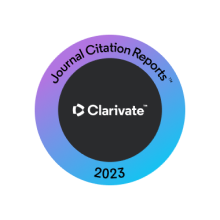Abstract
Introduction: The objective of this study was to evaluate the safety and feasibility of the immediate return of patients with ST-elevation myocardial infarction (STEMI) to their originating hospitals after primary percutaneous coronary intervention (PPCI). Methods: This was a prospective study, conducted between January 2014 and December 2017. All patients with STEMI who were transferred for PPCI and returned back to their referring hospitals (RB group) were included and compared to the onsite STEMI population (OS group). Patient’s demographics, PPCI data, bleeding and adverse cardiovascular events (ACEs) occurring during transfer, hospital stay, and at 1-month follow-up were recorded. Results: A total of 156 patients in the OS group were compared against 350 patients in the RB group. We found that first medical contact to balloon time and onset of symptoms to balloon time were significantly longer in the RB group than in the OS group [110 ± 67 min vs. 46 ± 35 min ( p < 0.0001) and 366 ± 300 min vs. 312 ± 120 min ( p¼0.04)], respectively. There were no differences between the RB and OS groups in in-hospital ACEs: 0.3% versus 0% ( p¼0.8) for death, 0.3% versus 0.6% ( p¼0.79) for reinfarction, 0.6% versus 2% ( p¼0.72) for bleeding, and no reported cases of repeat revascularization; and 30-day ACEs: 0.3% versus 0.6% ( p¼0.82) for death, 0.3% versus 1.2% ( p¼0.68) for reinfarction, 0.6% versus 2% ( p¼0.74) for bleeding, and 1.1% versus 1.2% ( p¼0.9) for repeat revascularization. Conclusion: The immediate return of patients with noncomplicated STEMI after PPCI to their referring hospitals is safe and feasible, and can be used as part of an effective reperfusion strategy.
Recommended Citation
Gul, Rahim; Opolski, Maksymilian P.; Akif, Mufti; Dar, Mehboob A.; Beshir, Yasir; Sakr, Haitham; Khalaf, Hassan; Eldesoky, Akram; Smettei, Osama A.; Soomro, Tariq I.; Saied, Mohammed; Ganawa, Asim; and Abazid, Rami M.
(2020)
"Safety of Returning Patients Immediately to Their Originating Hospitals After Primary Percutaneous Coronary Intervention,"
Journal of the Saudi Heart Association: Vol. 32
:
Iss.
1
, Article 2.
Available at: https://doi.org/10.37616/2212-5043.1001
Creative Commons License

This work is licensed under a Creative Commons Attribution-Noncommercial-No Derivative Works 4.0 License.




